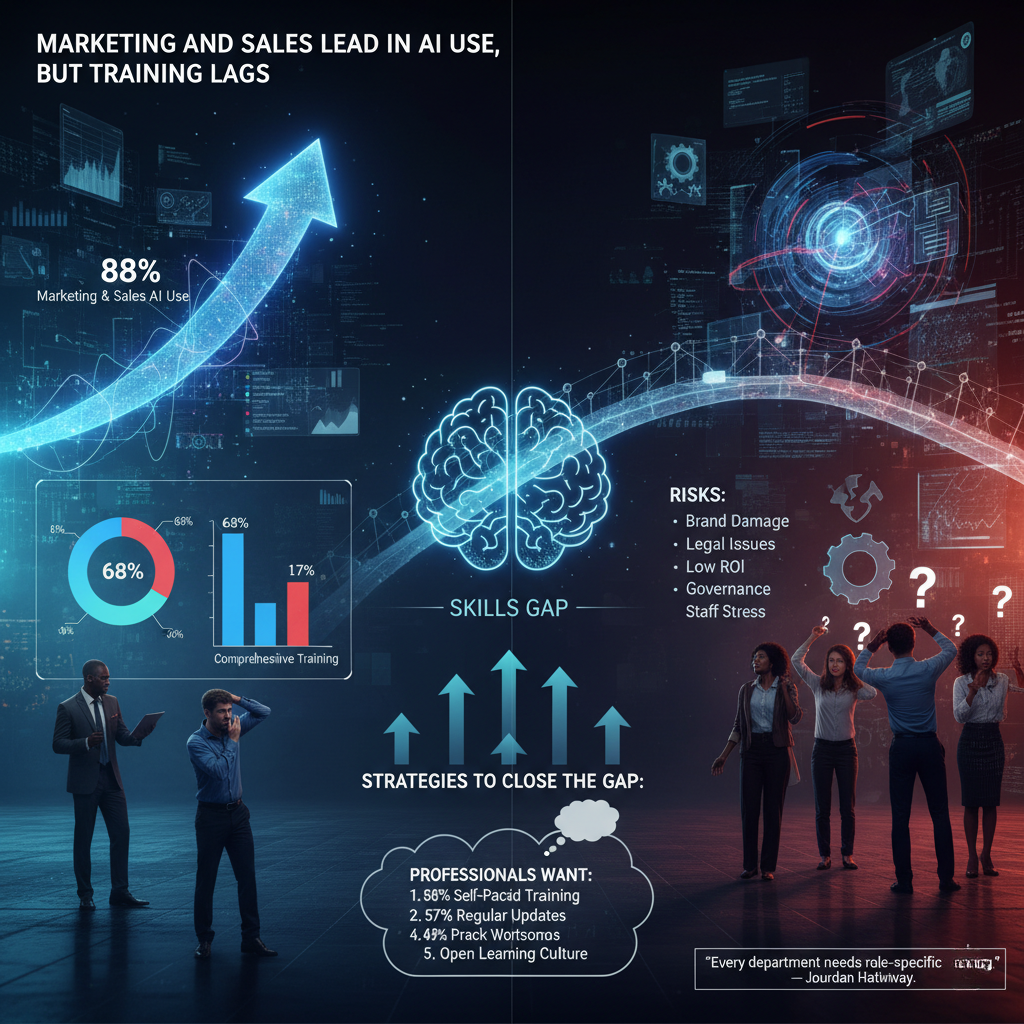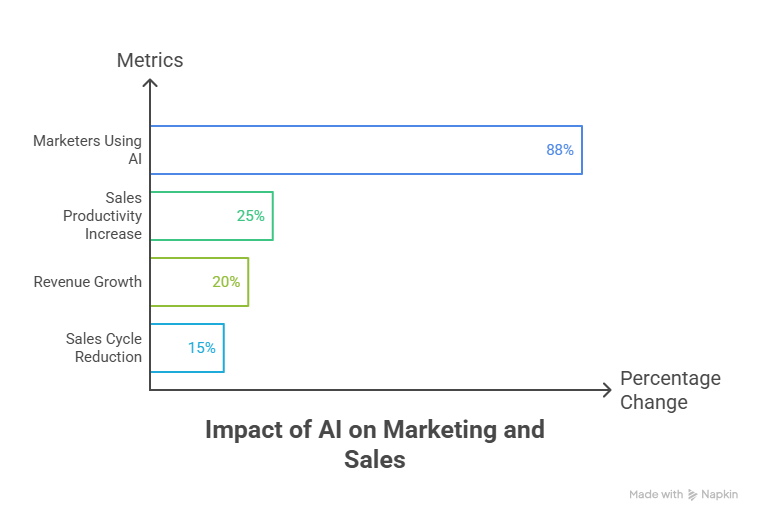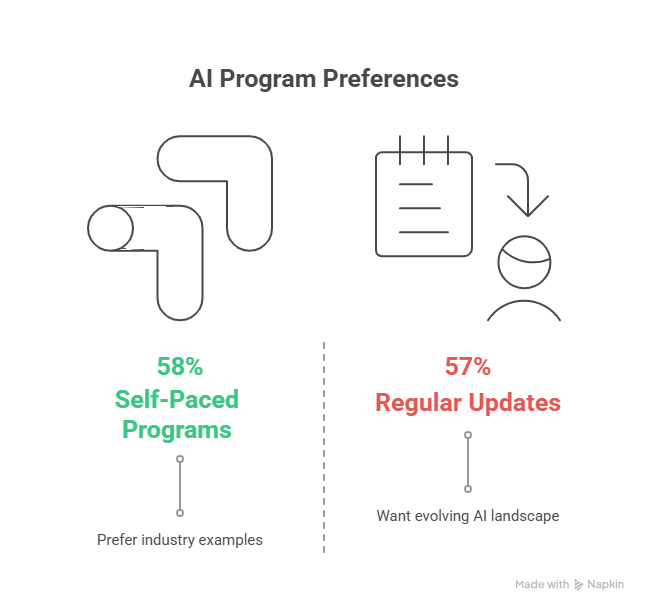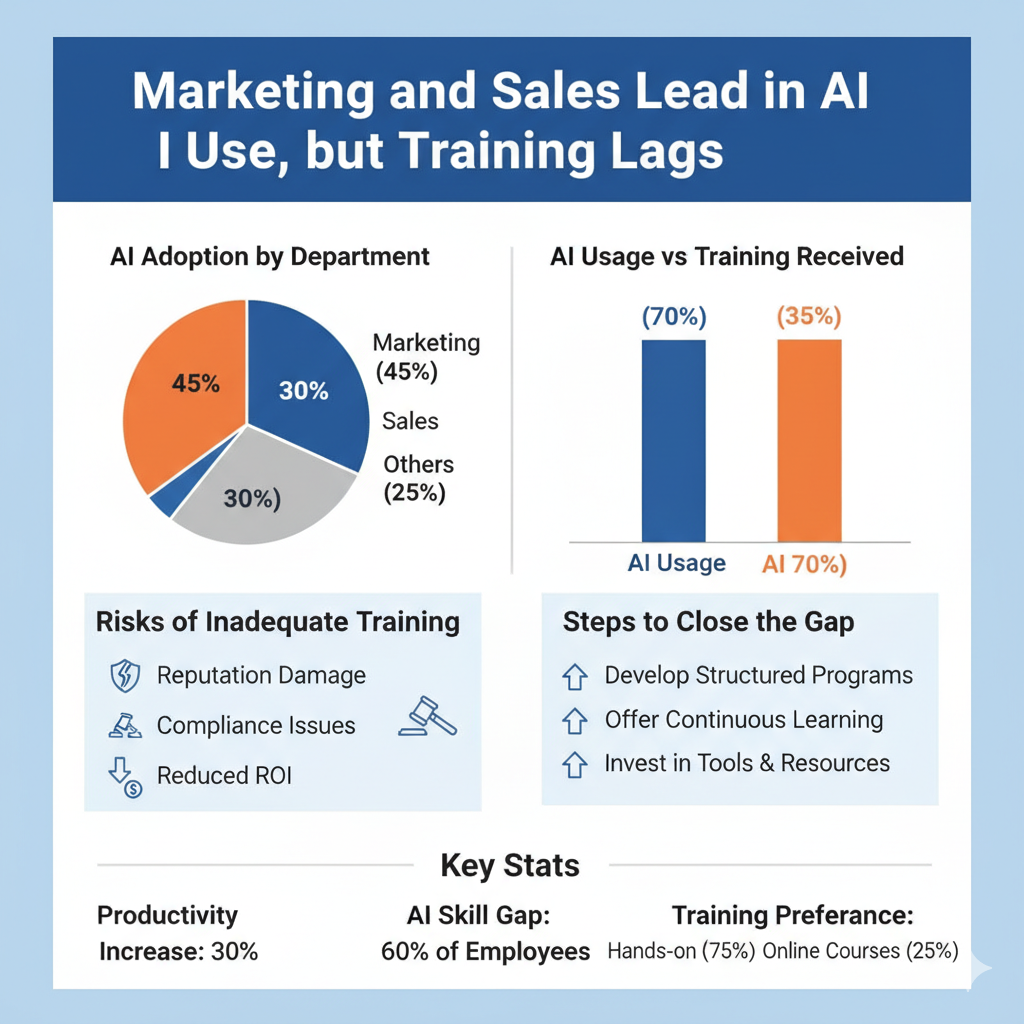Marketing and sales lead in AI use—but training lags behind, creating a risky gap between ambitious adoption and workforce readiness. In 2025, nearly 68% of sales and marketing professionals are deploying artificial intelligence in their workflows, transforming productivity, personalization, and customer engagement. Yet, only 17% have received comprehensive, role-specific training—leaving a large portion to self-learn or operate without clear guidelines. This blog explores the rapid rise of AI in marketing and sales, why training hasn’t kept pace, and strategies for closing the gap to maximize value and minimize risk.

Marketing and Sales Are Early AI Leaders
Adoption Rates and Real-World Impact
- 88% of marketers use AI tools daily for content creation, analytics, and automation.
- Sales teams see a 25% rise in productivity, 20% revenue growth, and 15% reduction in sales cycle lengths when deploying AI agents.
- AI in marketing is valued at $47.32 billion in 2025, with expected growth to $107.5 billion by 2028.
- Generative AI is transforming outbound marketing, with 30% of messages at large organizations now AI-generated.

Productivity and ROI Gains
- Marketers using AI are 44% more productive, saving an average of 11 hours per week.
- AI-driven sales and marketing operations often shift 75% of staff effort from production to strategy.
- Case Study: A major tech company in India reduced its sales cycle from 120 to 90 days through AI agents, cutting operational costs by $230,000 per quarter and boosting demo requests by 35%.
The Widening AI Training Gap
Why Training Lags Behind
Despite soaring adoption, just 17% of sales and marketing professionals have gotten detailed, role-specific training. The rest rely on generic modules, self-study, or none at all.
Key Reasons the Training Gap Exists
- Rapid evolution of technologies, outpacing HR’s ability to develop updated curricula.
- Pressure to innovate quickly creates a “learn-by-doing” culture with minimal support.
- Leadership often underestimates the risks of untrained AI use—brand safety, compliance, and data privacy concerns.
- 43% of marketers using AI say they don’t know how to maximize its value.
- Nearly 70% report their employer doesn’t provide generative AI training, even as they’re expected to deliver AI-powered results.
Bullet Points: Risks of Insufficient AI Training
- Accidental brand reputation damage from errors or bias in AI-generated content
- Legal and privacy risks from mishandling customer data
- Lower return on AI investment due to underutilization
- Heightened anxiety, stress, and loss of confidence among staff
How Patna Brands and Business Leaders Can Close the Gap
Strategies to Fix the AI Skills Shortage
1. Develop Role-Specific AI Training Programs
- Tailor workshops, online modules, and peer learning to actual job requirements.
2. Update Training Frequently - Keep content and best practices fresh as new AI tools emerge.
3. Create Governance Policies - Define which AI tools are approved, set usage guidelines, and clarify data privacy standards.
4. Track and Improve Outcomes - Measure productivity, ROI, and staff confidence, then adapt training accordingly.
5. Foster an Open Learning Culture - Encourage sharing of AI use cases and challenges across teams.
What Professionals Want From AI Training
- 58% prefer self-paced programs with industry examples.
- 57% want regular updates as the AI landscape evolves.
- 48% look for workshops focused on practical applications, not theory.

Real Quote:
“Generic, one-size-fits-all AI training might have worked three years ago. Today, every department needs role-specific training.” — Jourdan Hathaway, General Assembly
Actionable Insights: How To Maximize the Value of AI
- Audit your team’s AI usage—identify gaps in skills and applications.
- Involve staff in training design and feedback loops.
- Use real-world business cases in workshops, not abstract theory.
- Implement peer mentoring for ongoing support.
- Partner with external trainers, platforms, or digital agencies for specialized modules.
Internal Links
- End to End Digital Marketing Services by Vsurgemedia
- Social Media Marketing with Vsurgemdia for Growth
Authoritative External Links
- AI in Marketing: State of the Industry 2025 – McKinsey
- How Marketers Use AI – Survey Monkey
- General Assembly: AI in Marketing & Sales Survey 2025
Title: “Marketing and Sales Lead in AI Use, but Training Lags”

Conclusion & Call to Action
In 2025, marketing and sales are blazing ahead in AI adoption, transforming business outcomes faster than ever before. But with training and role-specific skill-building lagging, the true potential of AI remains untapped—and risks are mounting.
Don’t let your business fall behind. Invest in tailored AI training and clear policies to unlock the full value and safety of your marketing and sales AI strategies. Talk to industry experts, prioritize upskilling, and lead the way to smarter, safer, more profitable growth.

At Vsurgemedia, we don’t just create content—we craft experiences that amplify your brand, engage your audience, and drive real impact. Whether it’s powerful storytelling for NGOs, creative campaigns for businesses, or trend-setting social media strategies, our team ensures your vision stands out in the digital world. Ready to transform your ideas into influence? Partner with Vsurgemedia today and let’s make your brand unforgettable.

This is a helpful and concise summary. Thanks for sharing this key insight